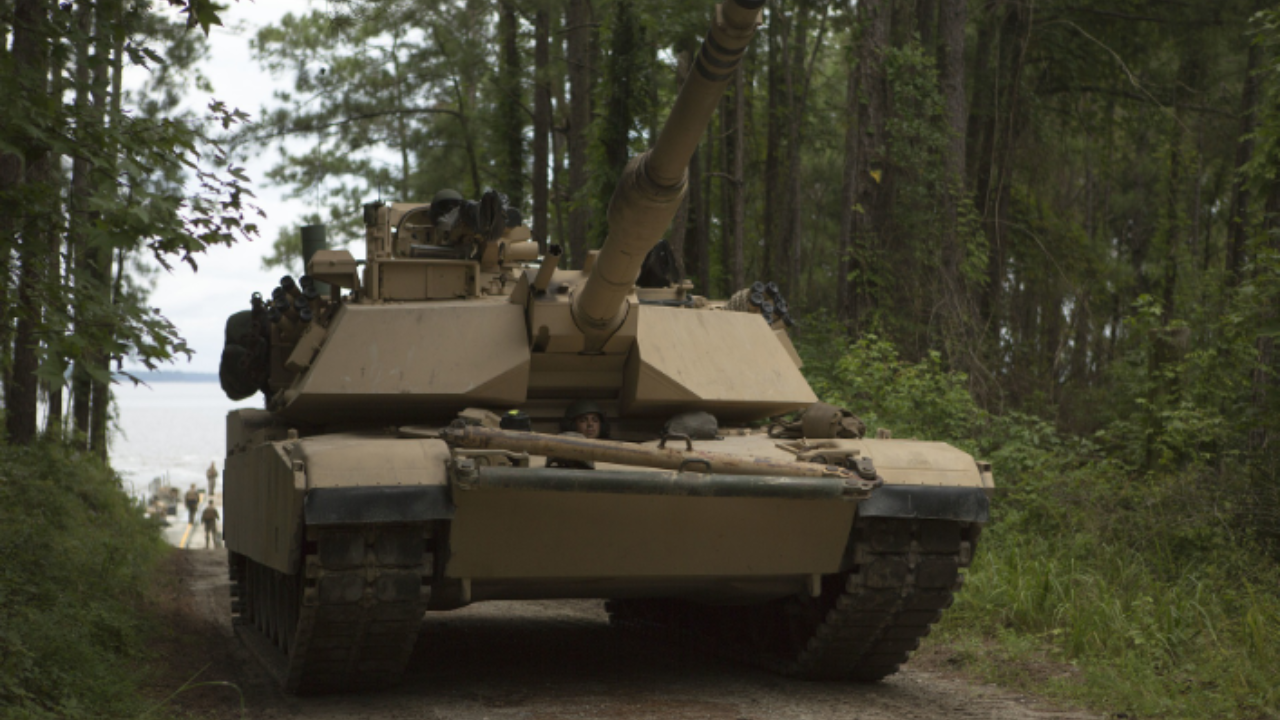The Abrams series of tanks has been the backbone of the U.S. military’s armored forces since the early 1980s. Named after General Creighton Abrams, the Abrams tank was developed to offer unmatched firepower, mobility, and survivability on the battlefield. Over the years, it has undergone several major upgrades, including the M1 Abrams, M1A1, and M1A2 versions. Each iteration has built upon the success of its predecessors, ensuring the Abrams remains a formidable force on the modern battlefield.
M1 Abrams: The Beginning of a Legend

- Production Years: 1979 - 1985
- Specifications:
- Engine: Honeywell AGT1500 gas turbine engine
- Horsepower: 1,500 hp
- Speed: Up to 45 mph on roads, 30 mph off-road
- Armor: Chobham composite armor
- Main Armament: 105 mm M68 rifled cannon
- Crew: 4 (commander, gunner, loader, driver)

The original M1 Abrams was introduced in 1980 as a next-generation tank to replace the M60 Patton. It was powered by a Honeywell AGT1500 gas turbine engine, which provided exceptional speed and agility despite its hefty weight. The M1’s armor was an innovative Chobham composite, a combination of materials designed to withstand high-energy impacts. Its main armament was a 105 mm M68 rifled cannon, capable of firing armor-piercing and high-explosive rounds, giving it solid versatility. The M1 also featured an advanced fire control system and laser rangefinder, providing high accuracy in combat.
M1A1 Abrams: The Tank That Changed the Game

- Production Years: 1985 - 1992
- Specifications:
- Engine: Honeywell AGT1500 gas turbine engine
- Horsepower: 1,500 hp
- Speed: Up to 45 mph
- Armor: Chobham composite with depleted uranium inserts
- Main Armament: 120 mm M256 smoothbore cannon
- Crew: 4
The M1A1 Abrams, introduced in 1985, brought significant upgrades over the original M1. One of the most notable changes was the replacement of the 105 mm cannon with a 120 mm M256 smoothbore cannon, which greatly increased firepower and lethality. The M1A1 also incorporated depleted uranium armor layers, boosting its ability to withstand anti-tank rounds and high-explosive munitions.

With its increased firepower and upgraded armor, the M1A1 became renowned during the Gulf War in 1991, where it outperformed Soviet-era T-72 tanks, showcasing the Abrams’ superior fire control, armor, and target engagement capabilities. The M1A1 became the most widely produced variant of the Abrams family, with several variations such as the M1A1 AIM (Abrams Integrated Management) program, which extended its operational life with enhanced electronics and upgraded armor.
M1A2 Abrams: The Modern Battlefield Heavyweight

- Production Years: 1992 - present
- Specifications:
- Engine: Honeywell AGT1500 gas turbine engine
- Horsepower: 1,500 hp
- Speed: Up to 45 mph
- Armor: Chobham composite with enhanced depleted uranium layers
- Main Armament: 120 mm M256 smoothbore cannon
- Crew: 4
- Advanced Features: CITV (Commander’s Independent Thermal Viewer), improved fire control, digital battlefield systems
The M1A2 Abrams, launched in 1992, introduced digital systems that vastly improved the tank’s battlefield capabilities. With the Commander’s Independent Thermal Viewer (CITV), the M1A2 allowed the tank commander to scan and engage multiple targets, improving target acquisition and combat response. The M1A2 also included a digital data bus and GPS-based battlefield management system, enhancing its coordination and situational awareness.

Several variants of the M1A2 have been developed over time. The M1A2 SEP (System Enhancement Package) series has introduced a range of upgrades, including enhanced depleted uranium armor, improved thermal imaging, and upgraded fire control software. The latest M1A2 SEP v3 variant, also known as the M1A2C, features modernized electronics, stronger communications, and increased reliability.
M1A2 SEP: The Pinnacle of Abrams Tank Evolution

- Production Years: 2002 - present
- Engine: Honeywell AGT1500 gas turbine engine
- Horsepower: 1,500 hp
- Speed: 45 mph (72 km/h)
- Armor: Chobham composite with depleted uranium layers
- Main Armament: 120mm M256 smoothbore cannon
- Crew: 4 (driver, gunner, loader, commander)
- Advanced Features: CITV, improved fire control, digital battlefield systems, auxiliary power unit (APU)
The M1A2 SEP (System Enhancement Package) is an advanced upgrade to the M1 Abrams, designed to boost its combat effectiveness and survivability. Developed in the early 2000s, it features improved armor, targeting systems, and digital communications, ensuring superior performance on modern battlefields. These upgrades enhance the tank’s ability to operate in complex combat scenarios, reinforcing the M1 Abrams' role as a formidable force in armored warfare.

With enhancements like the CITV (Commander’s Independent Thermal Viewer) and advanced GPS targeting, the M1A2 SEP excels in precision and situational awareness. Digital communication systems allow for seamless coordination with other units, while improvements in fuel efficiency and crew protection increase its sustainability and operational effectiveness. These upgrades solidify the M1A2 SEP’s position as one of the most capable tanks in the U.S. Army.
The Abrams Family Today and Beyond
The Abrams tank has consistently proven itself on the battlefield through each of its models and upgrades. Its heavy armor, advanced firepower, and cutting-edge targeting technology make it one of the most formidable tanks in the world. As threats and combat conditions evolve, the Abrams has been continually updated to meet modern standards. Future upgrades, such as the M1A2 SEP, are expected to add advanced sensors, laser protection systems, and active protection systems.
In conclusion, the Abrams series has set a high standard for main battle tanks, with each model offering incremental yet powerful advancements that keep it relevant and battle-ready.














